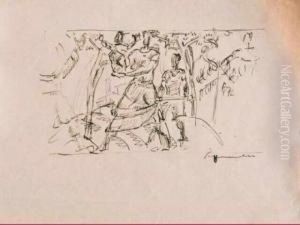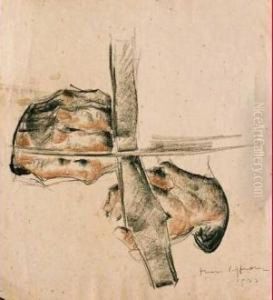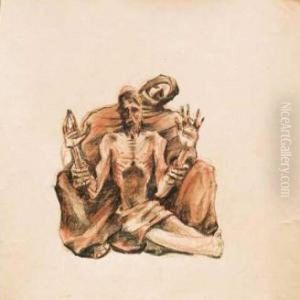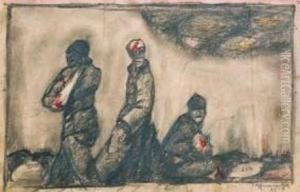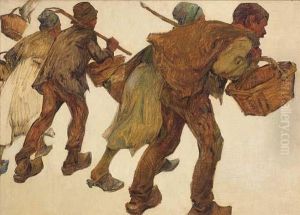Hans Piffrader Paintings
Hans Piffrader was an Austrian-Italian sculptor known for his significant contributions to the South Tyrolean art scene. Born on July 17, 1888, in Innsbruck, Austria, he spent most of his life and career in the South Tyrol region, which was part of Austria-Hungary at the time of his birth and became part of Italy after World War I.
Piffrader's early life was steeped in the rich cultural atmosphere of the Austro-Hungarian Empire. He began his artistic education at the Staatsgewerbeschule in Innsbruck, where he was initially trained in craft and design. His talent for sculpture soon became apparent, and he continued his studies at the Academy of Fine Arts in Vienna, which was a leading center of art and culture in Europe. There, he was influenced by the works of prominent sculptors and the artistic movements that characterized the early 20th century.
After completing his education, Piffrader served in World War I, an experience that would later influence his art. Following the war, he settled in the city of Bolzano in South Tyrol, which had been annexed by Italy. It was here that he established himself as a prominent sculptor, working on a number of public commissions and religious art. Piffrader's work often reflected a synthesis of traditional Tyrolean styles with the more modern approaches he had absorbed during his studies.
During the interwar period, Piffrader produced a variety of works ranging from small-scale sculptures to large public monuments. His style evolved to include elements of Expressionism and Art Deco, which can be seen in his treatments of the human figure and his use of geometric forms. However, his work always retained a certain regional character that spoke to the identity and history of South Tyrol.
One of Piffrader's most notable works is the relief on the Victory Monument in Bolzano, which was commissioned by the Fascist government to commemorate the Italian victory in World War I and the annexation of South Tyrol. The monument and its reliefs have been a point of contention due to their association with the Fascist regime and the sensitive history of the region.
Hans Piffrader's work continued to develop throughout his life, and he remained a central figure in the artistic community of South Tyrol until his death on June 28, 1950, in Bolzano, Italy. His legacy includes a diverse body of work that captures the tension between tradition and modernity, as well as the complex cultural dynamics of his time and place. Despite the political overtones that some of his work may carry, Piffrader is remembered as a master sculptor whose contributions have had a lasting impact on the art and culture of his region.
